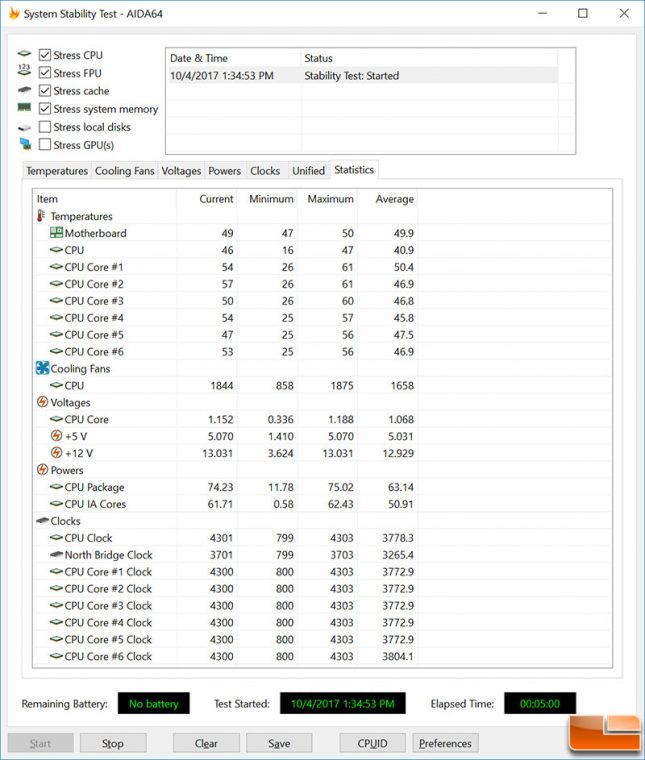Our 4.5GHz overclock with a 1.175VID couldn’t reasonably pass the Blender render without the help of maglev fans and a 360mm cooler, otherwise we entered throttle territory with our Kraken X62 and NZXT fans. The X62 was therefore discarded for this test, leaving us to the more effective 360mm radiator and maxed maglev fans. Throttling becomes a serious concern when considering that we’re testing on an open-air bench around 24C, and testing in a case can easily bring internal ambient temperatures up to 40C. That’s why this is important – that’s what we’re trying to convey to Intel about using better TIM. The CPU has all this potential in it, but it’ll thermal throttle quickly if using the stock TIM. It’s squandered, and we’re not sure why. It could be process or it could be money, but Intel has done better materials in the past.
Looking at the numbers, we’re at 63C with liquid metal and a 280mm cooler with NZXT’s stock fans. With TIM, the CPU was hitting 73C on a 360mm cooler with 3x maglev fans at max RPM. These are some of the best fans you can buy without going enterprise-grade, and the cooling setup was nearing 60dBA during testing. Even when it passed, it was unacceptably loud. That’s a 10-degree difference that favors the liquid metal mod when using a worse cooler with worse fans. That’s what this is about. Intel is creating a hidden cost to its CPUs: More noise and more money to get the things cooled under overclocks, and it’s awfully unfortunate. Even without overclocks, noise becomes a concern. The CPUs overclock exceptionally well – to the point that they start getting fiercely competitive – and Intel throws it all away. Given that Intel now has actual, real competition from AMD, it’s time to start paying attention to these “easy” points of improvement, relatively speaking.







